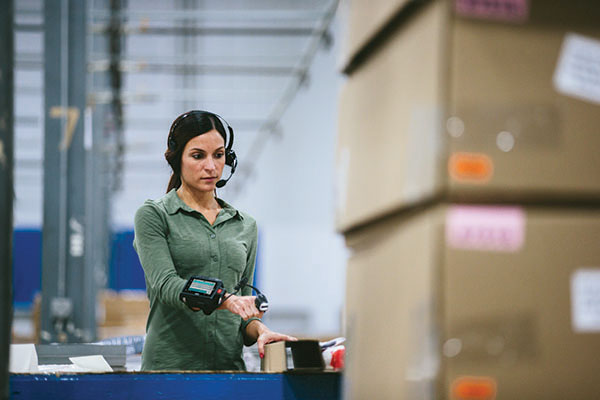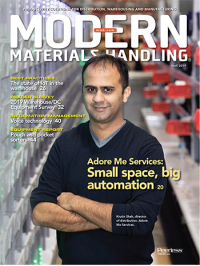Voice Technology Speaks for Itself
Voice solutions are as diverse as the algorithms and analytics driving them—exposing new opportunities.
At the turn of the millennium, a cell phone could make a call, send a text, fold in half, and that was about it. We’re now accustomed to carrying multimedia portals to the entirety of human knowledge—but we still call them cell phones. Voice-directed picking is also about 20 years old, but the popular concept of “voice” in warehousing and distribution has aged differently. Imagine showing a friend your 2019 cell phone and his response is: “That’s the thing that just makes calls and sends texts, right? It doesn’t even fold in half.”
Keith Phillips, president and chief executive officer of Voxware, says many in the industry assume all voice solutions—past and present—are essentially the same.
“There is a gross misunderstanding in the marketplace about what voice is. For us and a lot of our competitors, the technology is dramatically different than it was even a few years ago,” Phillips says. “Talking to existing customers—let alone prospective ones—their understanding of the solution is vastly different from what it is.”
Phillips says that although voice is a part of Voxware’s solution, it becomes a smaller part on almost a daily basis. He struggles to recall the last customer who implemented solely voice technology. Most at least use voice and scanning, if not image capture, augmented reality and more. They’re also using voice for more than picking. Voice supports everything that happens in a warehouse with the exception of containerization, Phillips says, but that’s slated to release by the publication of this article.
“At that point, we will cover every function in the warehouse,” Phillips says. “It’s a totally different solution than what people thought of five years ago.”
Speaking the same language
Early voice adopters focused on picking, but voice quickly spread to other functional areas. Mark Wheeler, director of supply chain solutions for Zebra Technologies, says some providers have expanded far beyond voice picking and are now closer to full warehouse execution or warehouse management system (WMS)-lite capability. At every step, flexibility has guided voice’s progress.
“For a long time, if you wanted to get the benefits of voice, it involved a major commitment to voice as a technology,” Wheeler says. “It informed devices and software and the whole technology stack was dedicated to that decision. As the technology matures, you have more capability to choose the right augmentations for the worker’s task.”
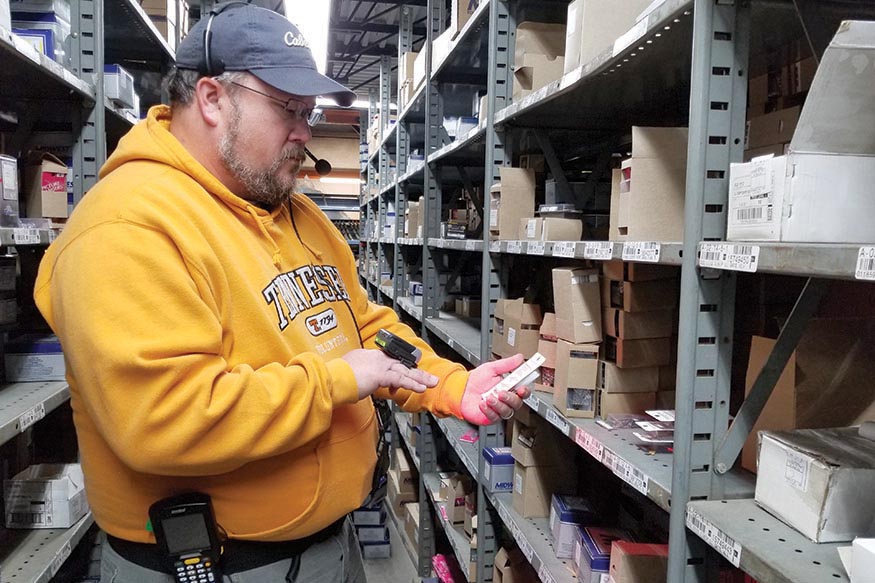
Collecting incredibly detailed data from multiple sources, analytics systems harness voice and mobile hardware to continuously optimize operations.
Bob Bova, president and CEO of AccuSpeech Mobile, agrees, emphasizing that voice can also help leverage the strengths of other mobile hardware capabilities. Just voice-enabling a device—and therefore any application it runs—can optimize processes and technologies without touching the back end at all, he says.
“You can exploit anything the hardware can do,” Bova says. “If you’re picking, receiving or what have you, say ‘exception,’ and the device will access an application’s submenu and load the appropriate form. This can take a task from 80 seconds to 20.”
Because voice so dramatically improved accuracy and productivity compared to paper-based processes, some early adopters got carried away. As they say: When all you have is a hammer, everything looks like a nail. But scanning is sometimes quicker and more accurate than speaking, and it’s rare that a single technology is ideal for an employee’s entire shift.
“Instead of working with only one modality, we see more technology that augments or is an alternative to voice,” Wheeler says. “Robotics, wearables, light-directed solutions. There are a lot of options.”
Now wearable displays are coming along, he adds, and the ability to read faster than one can listen, for example, could be advantageous for many workflows. A multi-modal approach incorporating several devices results in a common data platform. Taking it a step further, the same voice platform in multiple departments can help improve an entire facility or organization.
“You don’t want silo improvement, you want systemic improvement,” Bova says. “Any type of commonality you can introduce to break down silos will help managers, who won’t have to track down their counterparts for answers. They can all get on the same page and justify any investment because the best path will present itself.”
Analyzing analytics
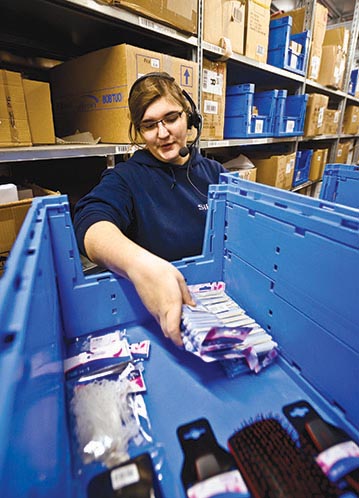 We know voice hardware has spread from its roots in picking to functional areas throughout the warehouse, and voice devices play nice with other mobile hardware. The software side, however, has undergone a radical transformation. Voice and its software are no longer subservient to the WMS. Voice now draws from WMS information, but also collects far more granular data on worker activity.
We know voice hardware has spread from its roots in picking to functional areas throughout the warehouse, and voice devices play nice with other mobile hardware. The software side, however, has undergone a radical transformation. Voice and its software are no longer subservient to the WMS. Voice now draws from WMS information, but also collects far more granular data on worker activity.
“A WMS wants to know what was picked, when and by whom. That’s it. It can’t consume all the microdata collected,” says Krishna Venkatasamy, chief technology officer for Lucas Systems. “That’s where machine learning tools can actually use that data instead of throwing it away.”
With visibility into all pieces of every transaction, Venkatasamy says analytics will identify patterns that can be brought up to managers and their managers, all the way to the C-suite.
In addition to facilitating real-time, dynamic work execution, that granular data is fed into analytics engines. As it matured, analytics has progressed from a focus on data from the past to the present, and is now pushing into the future. Or, as research and advisory firm Gartner put it in a recent study: hindsight, insight, foresight.
Gartner’s four subsets of analytics:
- Descriptive: What happened?
- Diagnostic: Why did it happen?
- Predictive: What will happen?
- Prescriptive: How can we make it happen?
Descriptive and diagnostic analytics answer questions like: What is our current productivity? How does that compare to last week, month or year? What are the trends, and why are they changing? Knowing this information can improve planning, but insights from higher-level predictive and prescriptive analytics are not to be confused with mere predictions.
Venkatasamy offers clarification. Say you have pickers on 20 routes and want to know the status of picking across the warehouse and predict what the completion time might be.
“That’s kind of predictive, but it’s still based on averages and what happened in the past,” Venkatasamy says. “These are all straight-line calculations that are likely to be more or less accurate.”
Predictions are based on simple, discrete metrics like workers, cases and orders, and simple arithmetic or classic engineered labor standards (ELS) calculations help set optimal targets. True predictive analytics account for discrete metrics as well as all the spaces in between. Given a number of unique orders, a pool of unique workers, travel distance for each and impacts from related processes, sophisticated calculations will determine the completion time. Rather than hard-coding a highly specific, static model for each DC—a time-consuming, manual exercise—machine learning uses algorithms to build a dynamic, predictive model.
“This is game changing because not only do you get more accurate predictions than you would from ELS calculations, it democratizes that capability for all,” Venkatasamy says. “It doesn’t take hundreds of thousands of dollars and a consultant to engineer the labor standards and calculate how long it takes to make 10 picks. Algorithms will learn and give you the answer.”
They learn.
That’s the transformative power of analytics’ method of gathering data from voice systems to understand operations. Anyone familiar with autocorrect or search engines gets the basic idea of machine learning. Based on past usage, analytics can tailor the experience to individual companies, facilities and workers to optimize their performance. Any historical data can be fed to the system on day one, and even three years of data from one customer is enough for machine learning algorithms to digest and create a model, Venkatasamy says. Each day it’s used, the model will fine tune itself.
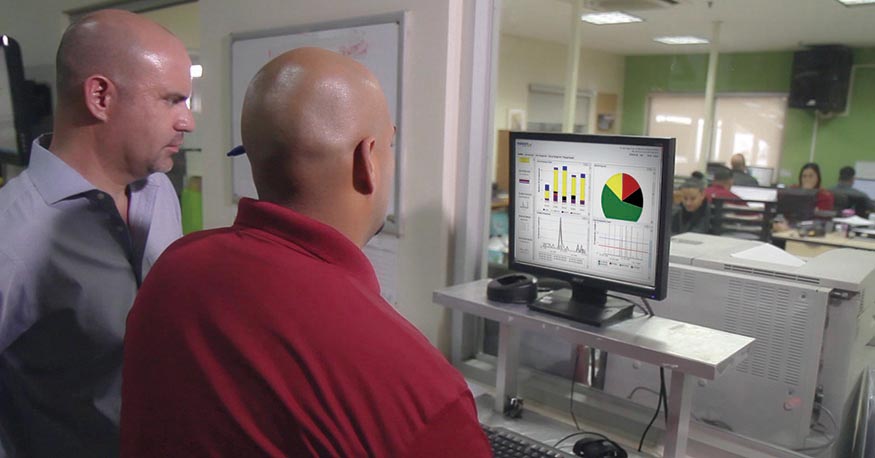
Real-time data and analytics can assess the performance of workers, supervisors and managers—all the way to the C-suite. [Photo courtesy of Voxware]
According to Lucas Systems, machine learning is a subset of artificial intelligence that applies learning algorithms to large sets of data to create a predictive model. By continually improving the model over time, machine learning can be an alternative to traditional warehouse optimization approaches that are costly to implement and maintain.
Unlike any software configured by humans, analytics’ ability to learn can produce surprises, according to James Hendrickson, director of marketing and product management at Honeywell Safety & Productivity Solutions.
“The valuable pieces come between the parts we already think are valuable,” Hendrickson says. “What are the shadow metrics the business had not previously captured? The beauty is in a serendipitous discovery.”
Hendrickson says cost is one of the big hurdles that powerful, Cloud-based analytics can sidestep. “It allows a more diverse set of supply chain customers to access things that were previously only for the big guys. ROI-based sale is often a euphemism for ‘really expensive,’” Hendrickson says. “But with analytics, it can be calculated more dynamically so you see the ROI in a real way.”
Whispers add up to a shout
The application of analytics to data throughout a facility plays into the Internet of Things, Wheeler notes. In an IoT world, printers, scanners, mobile computers and even some lighting systems become more than they are on their own. Sensored-up and intelligent, an array of technologies can come together on one platform. The latest frontier for analytics is location data, which is becoming more available and valuable by the day.
“It’s an opportunity and challenge for lots of warehouses to effectively leverage location awareness to drive process improvement,” Wheeler says. “Not just after-the-fact optimization, but in real time. What is the best way to assign this task, not based on the last location they scanned, but where they are right now?”
Passive RFID will also play a big role, he says, as the only way to economically add intelligence to materials. More expensive RFID tags make sense for assets that will stay with you for their life, but for anything coming and going, Wheeler says RFID is “the way to give those materials a digital voice.”
As visibility and analytics spread across the supply chain, road construction data could tell shippers to release an order 30 minutes before the standard cutoff. Rather than hiring 10% more temporary workers than last year just to be safe, Venkatasamy says a supervisor will know the workforce needed to meet a specific demand. Instead of 100 full-time temps, analytics might recommend 25 for four-hour shifts and 75 for 8 hours. The system knows precisely the capabilities of the employee base and how to complement it accordingly. With voice, training can take days instead of weeks.
The industry has come a long way in terms of making mountains of data more manageable, even as it continues to unlock new data sources. With intelligent, self-improving software hunting for value, the job becomes easier. If the potential to collect and interpret data is virtually endless, then analytics are the GPS for navigating which veins of data are most valuable and how to extract that value.
Companies mentioned in this article:
- AccuSpeech Mobile
- Honeywell Safety & Productivity Solutions
- Lucas Systems
- Voxware
- Zebra Technologies

Article Topics
Mobile & Wireless News & Resources
ProGlove and topsystem partner on hands-free picking solution CaPow’s power-in-motion solution eliminates charging downtime International Retailer Optimizes Efficiency Through Asset Lockers Writing the book on streamlined data capture 60 Seconds with Diego Vega from the Hanken School of Economics The Rebound: 3D Transformation at GE Appliances Barcoding, Inc. joins Graham Partners More Mobile & WirelessLatest in Materials Handling
Registration open for Pack Expo International 2024 Walmart chooses Swisslog AS/RS and software for third milk processing facility NetLogistik partners with Vuzix subsidiary Moviynt to offer mobility solutions for warehouses Materials Handling Robotics: The new world of heterogeneous robotic integration BSLBATT is looking for new distributors and resellers worldwide Lucas Watson appointed CSO for Körber’s Parcel Logistics business in North America Hyster recognizes Dealers of Distinction for 2023 More Materials HandlingAbout the Author
Subscribe to Materials Handling Magazine

Find out what the world's most innovative companies are doing to improve productivity in their plants and distribution centers.
Start your FREE subscription today.
April 2024 Modern Materials Handling

Latest Resources


